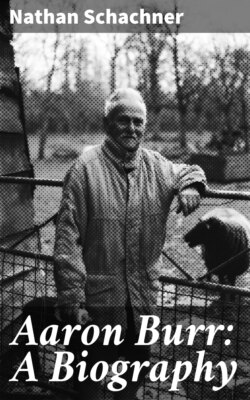Читать книгу Aaron Burr: A Biography - Nathan Schachner - Страница 13
На сайте Литреса книга снята с продажи.
1. The Insatiable Student
ОглавлениеTable of Contents
Princeton was a small village in those days. The College itself consisted of two buildings—Nassau Hall, the nobly proportioned eating, living and intellectual quarters of the students, and the President’s home, with whose prospect in the course of construction Esther Burr had been so entirely enamored. Dense forests lay on every side, and other settlements were few and far between. But the New York-Philadelphia stage stopped overnight at the only tavern in the village, and brought regular news of the outside world, and provided a meeting-place where the young students could seek relief from the too chilly dogmas of moral philosophy.
The young boy of thirteen applied himself at once with the utmost diligence to his studies. He devoted from sixteen to eighteen hours of close application to his books. He ate and drank with Spartan abstemiousness, finding that a well-loaded stomach was conducive to mental and physical sluggishness. He was determined to keep up with the others of his class at whatever cost.
But this remarkable regime could not but undermine his constitution and lay the foundation for future disorders. His health gave way. When, however, he discovered at the end of the year that he had exceeded most of his companions in standing, he wisely decided to relax his furious pace. For the remainder of his college career he took his studies in their stride, easily and without the pale, sickly cast of the midnight lamp. Whereupon his health improved and he was able to devote himself to the other recreations that Princeton might afford.
For one thing he joined the literary societies. There were two of them, the American Whig and the Cliosophic, rivals in debate and a somewhat scurrilous paper warfare. He first became a member of the American Whig. With him in that organization were such future notables as James Madison, President of the United States, Philip Freneau, the Revolutionary poet and pamphleteer, Lighthorse Harry Lee, member of the Constitutional Convention, and Hugh Brackenridge, Judge of the Pennsylvania Supreme Court.[38]
In 1771, however, for some reason, he quit his associates and joined the rival society, the Cliosophic. According to legend he was one of its founders. But it had been in existence since 1765, when it was known as the Well-Meaning Society. William Patterson, Oliver Ellsworth, Luther Martin, Tapping Reeve and Robert Ogden—all names to conjure with—had been its organizers. It ran afoul of the Faculty and was suppressed in 1768 or 1769. In June of 1770 a group of future clergymen, all seniors, revived the corpse under the name of the Cliosophic Society. Burr joined some six months later.[39]
With this Society he remained until graduation, and after. His closest friendships—friendships that were to last far into manhood—were conceived and stimulated within the roster of the two societies. William Patterson, Governor of New Jersey, United States Senator and a Justice of the Supreme Court; Matthias Ogden, his boyhood chum, later Colonel and Brigadier General in the Revolutionary Army; Samuel Spring, chaplain of Arnold’s expeditionary force and distinguished divine; Luther Martin, the renowned “bulldog of Federalism,” who was to come to Burr’s aid when Jefferson demanded his life, and who in turn was to be harbored and cherished in a lonely, sodden old age; Henry Brockholst Livingston, New York’s Chief Justice and later of the United States Supreme Court; and Jonathan Dayton, Senator from New Jersey, whose fortunes and whose very life were to be intertwined with those of Aaron Burr.
There were others, too, equally distinguished, whose present friendship could not outlast the tides of political importunities and the slings and arrows of outrageous fortune. Of such were Morgan Lewis, long after to oppose his former comrade for the Governorship of New York, Jonathan Mason, Senator from Massachusetts, who failed him in his hour of bitterest need, and James Madison, who followed Jefferson’s political banner into unrelenting enmity—and the Presidency of the United States.
A remarkably notable group—these young men of Princeton!
The Cliosophic Society never grew to be ashamed of its famous son. In the darkest of his years, when he was an outcast and all men’s hands were turned against him, it delighted to show him honor. In 1812, just returned from his European exile, the Society promptly and somewhat defiantly elected Aaron Burr its President. In 1826 it repeated the gesture. When he died, public mourning was decreed for a period of thirty days and the Society turned out en masse to follow the last poor remains to their resting-place.[40]
